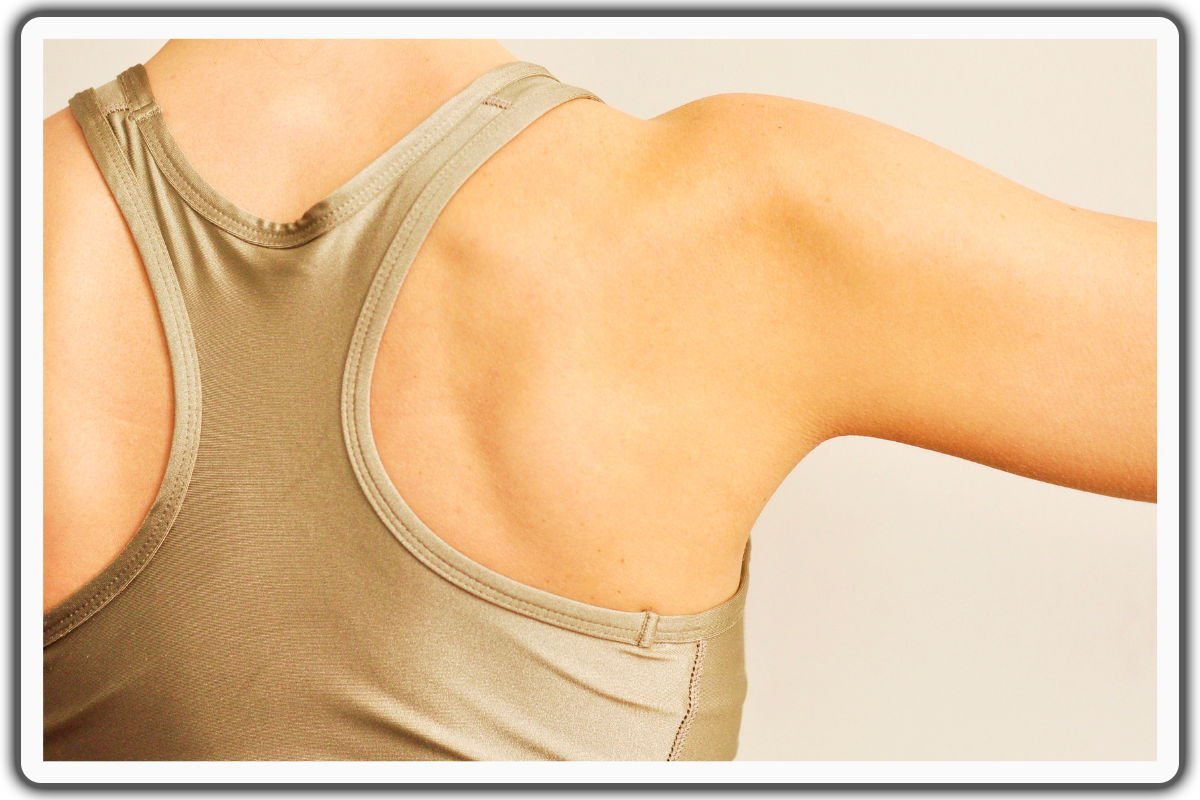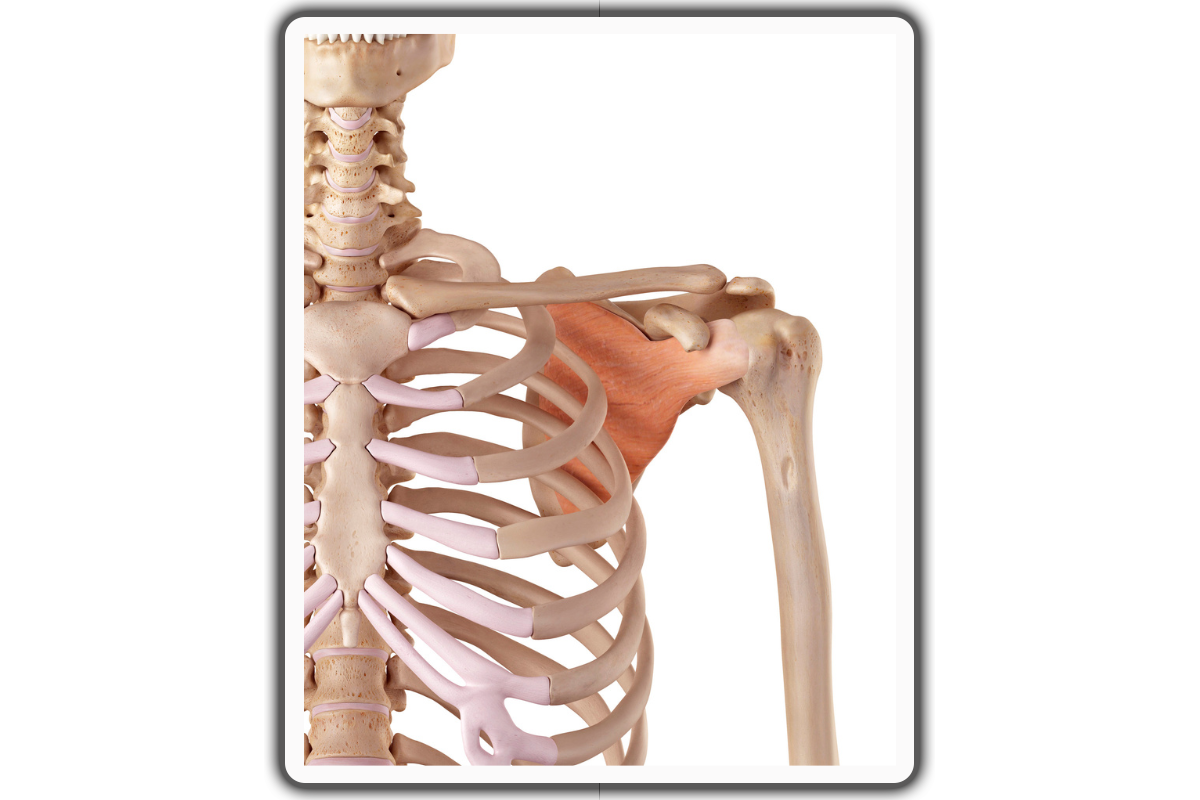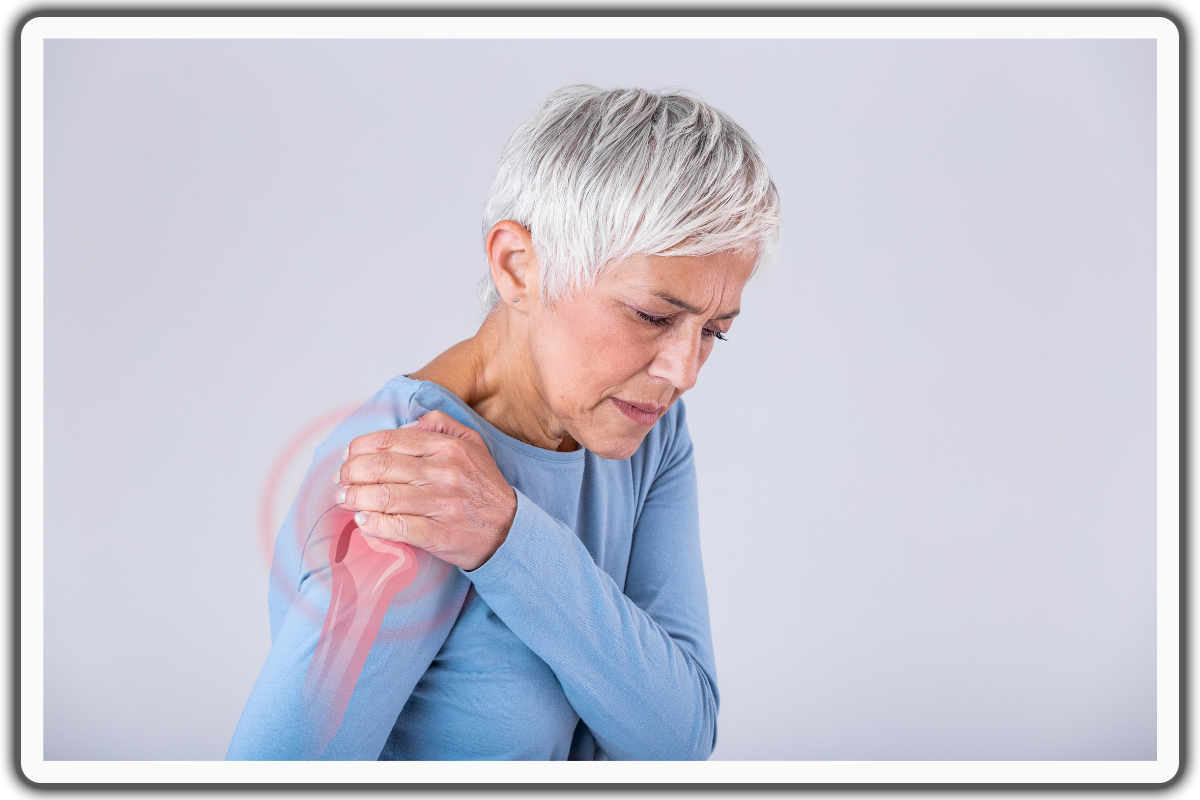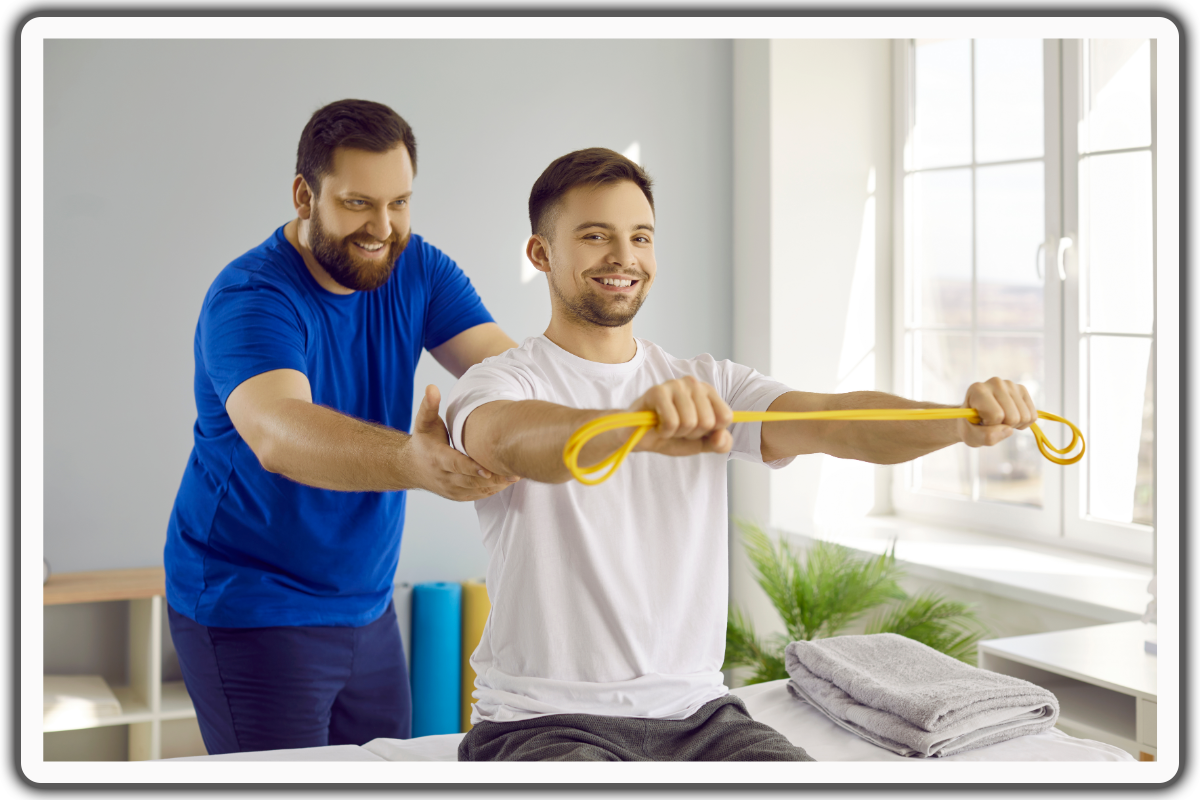The Shoulder Anatomy: Understanding Your Shoulder Structure and Function
Shoulders are amazing parts of our body. They let us do various things, like lifting and playing sports. Knowing how anatomy of the shoulder work is essential to preserve the joint and avoid injuries. Shoulders are bones, muscles, and joints that work together. Think of them like a powerful machine for your upper body. Learning about how your shoulders function helps prevent injuries and improves your use. So, by understanding these important parts of your body, you can stay healthy, do more, and enjoy life to the fullest.

Understanding the intricacies of shoulder anatomy is crucial for several reasons. First, it aids in injury prevention. Awareness of the shoulder's structure helps individuals identify potential vulnerabilities and adopt strategies to protect these delicate joints. Second, knowledge of shoulder anatomy is pivotal in diagnosing and treating shoulder-related conditions, ensuring that healthcare professionals can provide effective care.
Moreover, appreciating the shoulder's anatomy empowers athletes, fitness enthusiasts, and everyday individuals to optimize their performance. By strengthening the muscles and maintaining the integrity of the shoulder structure, individuals can enhance their functional abilities and also maintain an active lifestyle. In essence, the significance of shoulder anatomy lies in its role as a linchpin for daily activities, injury prevention, and also the pursuit of a healthy, active life.
The Shoulder Anatomy: Bones, Joints, and Muscles

Shoulder Joints
The shoulder is a complex joint with several components that work together to provide mobility and stability. The primary joints of the shoulder are:
1. Glenohumeral Joint
It is the main shoulder joint formed by the humeral head (upper arm bone) fitting into the glenoid fossa of the scapula (shoulder blade). It allows for a wide range of motion, including flexion, extension, abduction, adduction, and internal and external rotation.
2. Acromioclavicular Joint (AC)
This joint is formed by the scapula and the clavicle (collarbone) acromion process. It provides stability and some limited movement for the shoulder, particularly during movements that also involve raising the arm above the head.
3. Sternoclavicular (SC) Joint
This joint connects the clavicle to the sternum (breastbone). It allows for movement of the clavicle in multiple directions and is also important for overall shoulder mobility.
Functionally, these shoulder joints work together to provide a remarkable range of motion, allowing the arm to move in various directions. The glenohumeral joint is responsible for most of the arm's mobility. In contrast, the AC and SC joints contribute to overall shoulder stability and help transmit force and movement between the upper limb and the torso. This intricate interplay of joints and associated muscles allows us to perform activities ranging from lifting objects to throwing a ball, emphasizing the importance of a healthy and well-functioning shoulder complex in our daily lives.
Shoulder Bones
1. Humerus
The humerus is the upper arm bone and the longest bone of the upper limb. It connects the shoulder to the elbow and forms the "arm" part of the shoulder joint. The head of the humerus fits into the shallow socket of the scapula to create the ball-and-socket shoulder joint.
2. Scapula (Shoulder Blade)
The scapula is a triangular-shaped bone at the back of the upper rib cage. It serves as an essential component for shoulder movement and stability. Key parts of the scapula include the glenoid cavity (socket), acromion, and coracoid processes, which serve as attachment points for muscles and ligaments.
3. Clavicle (Collar bone)
The clavicle is a slender, S-shaped bone that connects the sternum (breastbone) to the acromion process of the scapula. It helps hold the shoulder joint in place and supports the upper limb.
These three shoulder bones, the humerus, scapula, and then clavicle, work together to form the shoulder girdle and enable the remarkable range of motion and flexibility associated with the shoulder joint. Understanding the structure and also function of these shoulder bones is essential for comprehending how the shoulder operates and how it can be prone to various injuries and conditions.
Shoulder Muscles
1. Deltoid Muscle
The deltoid is a large muscle covering the shoulder joint with three distinct parts - anterior, lateral (middle), and posterior. It is responsible for lifting the arm forward, backward, and to the side.
2. Rotator Cuff Muscles
The rotator cuff comprises four muscles: the supraspinatus, infraspinatus, teres minor, and subscapularis. Their primary function is stabilizing the shoulder joint, supporting arm movements, and also facilitating arm rotation.
3. Trapezius Muscle
The trapezius spans the neck, upper back, and shoulder region. It helps raise and lower the shoulder blades, crucial for various arm movements.
4. Rhomboid Muscles
The rhomboids (major and minor) are located between the shoulder blades. They retract and stabilize the scapulae (shoulder blades) and also assist in maintaining good posture.
5. Pectoralis Major
The pectoralis major, commonly known as the chest muscle, contributes to arm flexion and inward rotation when the arm moves across the body.
6. Latissimus Dorsi
The latissimus dorsi, or "lats," are large back muscles that assist in various shoulder movements, such as arm extension and adduction (bringing the arm toward the body).
7. Serratus Anterior
This muscle runs along the sides of the ribcage and helps in the protraction (forward movement) and stabilization of the scapulae, which is important for reaching and lifting movements.
8. Biceps Brachii
While primarily a muscle of the upper arm, the biceps also play a role in shoulder function by assisting in arm flexion and supination (turning the palm upward).
These muscles work together in a coordinated manner to provide stability, strength, and a wide range of motion to the shoulder joint, allowing us to perform various daily activities and then sports-related movements involving the upper limbs.
Shoulder Ligaments
1. Glenohumeral Ligaments
These ligaments strengthen the shoulder joint's front, back, and bottom (glenohumeral joint) and also help prevent dislocations.
2. Coracohumeral Ligament
It reinforces the upper part of the shoulder joint and provides additional stability.
3. Acromioclavicular (AC) Ligament
This ligament connects the acromion (part of the scapula) to the clavicle (collarbone) and then lsostabilizes the AC joint.
4. Coracoclavicular (CC) Ligaments
These ligaments support the AC joint, preventing separation of the clavicle and scapula.
Shoulder Tendons
1. Rotator Cuff Tendons
The rotator cuff comprises four tendons: supraspinatus, infraspinatus, teres minor, and subscapularis. These tendons surround the shoulder joint and attach the muscles to the humerus. They are critical for shoulder stability and also responsible for various movements, including lifting and rotating the arm.
2. Biceps Tendon
The long head of the biceps tendon attaches to the top of the glenoid and runs down the front of the humerus. It helps stabilize the shoulder joint and then plays a role in certain arm movements.
3. Subscapularis Tendon
This rotator cuff tendon is situated on the front side of the shoulder and aids in the internal rotation of the arm.
4. Infraspinatus and Teres Minor Tendons
These rotator cuff tendons on the shoulder's back side facilitate the arm's external rotation and adduction.
5. Supraspinatus Tendon
This tendon assists in lifting the arm away from the body (abduction).
The ligaments provide stability to the shoulder joint, preventing excessive movement. At the same time, the tendons connect muscles to bones and also enable various shoulder movements, including lifting, rotating, and stabilizing the arm. Understanding the roles of these ligaments and tendons is essential for diagnosing and treating shoulder injuries and conditions.
Wide Range of Motion
The shoulder has a wide range of motion unmatched by any other joint in the human body. This remarkable flexibility allows us to perform various activities, from simple daily tasks like reaching for objects on high shelves to complex athletic movements like throwing a baseball or swimming.
The shoulder's ball-and-socket joint design, formed by the head of the humerus and the shallow glenoid cavity of the scapula, enables a full 360-degree rotation along with abduction, adduction, flexion, and extension. However, this extraordinary mobility also makes the shoulder vulnerable to injuries, emphasizing the need for proper care and conditioning to maintain its function and prevent potential issues.
The Common Injuries To The Shoulder

1. Rotator Cuff Tears
The rotator cuff comprises four muscles and then their connected tendons encircling the shoulder joint. This ensemble offers stability and facilitates diverse shoulder movements. Rotator cuff tears can occur due to repetitive overhead motions (common in athletes like baseball pitchers and swimmers), aging (as tendons weaken over time), or sudden traumatic events. Common symptoms encompass discomfort, muscle weakness, and restricted shoulder mobility.
2. Shoulder Impingement
Shoulder impingement happens when the tendons of the rotator cuff become pinched or irritated as they pass through the subacromial space (the area beneath the acromion, a part of the shoulder blade). This condition often results from repetitive overhead activities like painting, swimming, or throwing. Symptoms include pain and weakness when lifting the arm. Treatment typically involves rest, physical therapy, and then avoiding activities exacerbating the condition.
3. Frozen Shoulder (Adhesive Capsulitis)
This condition is marked by discomfort and rigidity in the shoulder joint. It typically progresses through stages: freezing (increasing pain and reduced mobility), frozen (persistent stiffness), and also thawing (gradual improvement). The exact cause is unclear, but it often occurs without a specific injury. Treatment includes physical therapy, pain management, and then, in some cases, corticosteroid injections. Severe cases may require manipulation under anesthesia or arthroscopic surgery to release tight tissues.
4. Shoulder Dislocation
A shoulder dislocation occurs when the upper arm bone (humerus) is forced out of the shoulder socket (glenoid). This injury is often a result of trauma, such as a fall, sports collision, or accident. Symptoms include intense pain, deformity, and the inability to move the affected arm. Emergency medical attention is also required to reduce the dislocated shoulder, usually through closed reduction. Afterward, the shoulder may be immobilized with a sling, and rehabilitation exercises are necessary to regain strength and stability. Recurrent dislocations may require surgical intervention.
5. Bursitis
Shoulder bursitis is the inflammation of the bursa sacs (fluid-filled cushions) that help reduce friction between the tendons and bones in the shoulder joint. It often results from repetitive overhead movements or direct trauma. Symptoms include pain, swelling, and also limited shoulder mobility. Treatment typically involves rest, ice, anti-inflammatory medications, and physical therapy.
6. Labral Tear
The labrum is a cartilage ring that surrounds the rim of the shoulder socket (glenoid), providing stability to the joint. Tears in the labrum can occur due to trauma, overuse, or repetitive overhead motions. Symptoms may include pain, a feeling of instability, and then limited shoulder movement. Treatment options include physical therapy, rest, and, in some cases, arthroscopic surgery to repair the torn labrum.
7. Tendonitis
Tendonitis in the shoulder involves inflammation of the tendons connecting muscles to bones in the shoulder joint. It often occurs due to overuse or repetitive motions and is sometimes called "tendinitis" or "tendinopathy." Symptoms include pain, swelling, and tenderness in the affected area. Treatment typically includes rest, ice, anti-inflammatory medications, and physical therapy to strengthen the shoulder and improve flexibility.
The Importance of Proper Shoulder Care

Maintaining shoulder well-being is essential for everyday mobility and function, especially since the shoulder is one of the body's most flexible joints. Neglecting shoulder health can also lead to pain and injuries that limit your ability to carry out daily tasks and enjoy physical activities. By prioritizing shoulder care through appropriate exercises, rest, and injury prevention, you can lead a pain-free, active life while reducing the risk of long-term complications.
One key advantage of proper shoulder care is the preservation of functionality. The shoulder's exceptional mobility is crucial for daily tasks, from basic activities like reaching and dressing to more demanding athletic pursuits. Diligent shoulder care protects against injuries, especially from repetitive or high-impact activities. You can lower the chances of common issues like rotator cuff tears and dislocations through techniques like strength training, proper form, and rest.
Conclusion
In summary, prioritizing shoulder health is essential for overall well-being and an improved quality of life. The shoulder's wide range of motion is crucial for daily activities, and neglecting its care can lead to injuries and discomfort. By understanding and actively maintaining the anatomy of the shoulder health through techniques like strength training and proper posture, we empower ourselves to lead more fulfilling lives with enhanced physical capability and reduced discomfort.
